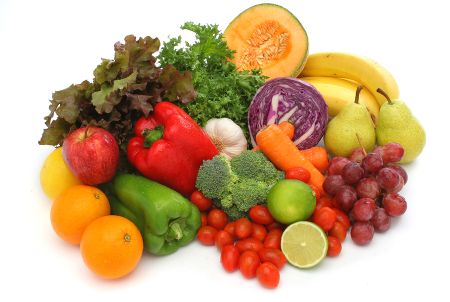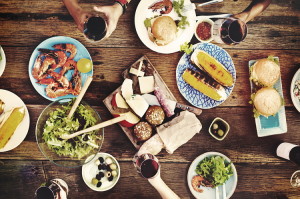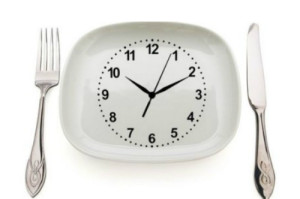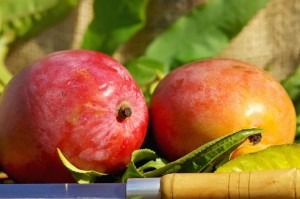Instead of taking a variety of nutritional supplements to supply your body with minerals and vitamins, the most efficient and safe way to do that is just to eat more fruits and vegetables. Each color reflects its contribution to your health.
Eating fruits and vegetables is the cheapest and most natural and accessible preventive medicine for many disorders of modern times: heart disease, hypertension, stroke, lipid, diabetes, certain types of cancer, age-related eye changes, dementia, arthritis and indigestion. Of course, adding these to your diet will also help you attain and maintain a healthy weight.

Fruits and vegetables are rich in nutritional fiber, vitamins, minerals, and antioxidants and contain a fairly small amount of energy; fruits have more carbohydrates than vegetables, and for this reason, only vegetables have members among them considered “free” foods.
Fruit and vegetable fibers support good health in several important ways. The fibers are of both “insoluble” and “soluble” types, most of which our body can’t break down; those that do break down produce both food for “good” bacteria and short-chain fatty acids in the intestine, which have been found to support immune function and lessen the risk for colorectal cancer. Those that do not bread down support normal bowel movement and health, which can be beneficial against both constipation and loose stools – as well potentially preventive against colon-related cancers. Fibers also have the ability to absorb bile acids and sugars from the intestine, enabling their release outside of the body – this way, they may diminish blood levels of fatty substances and assist in blood sugar control in cases of diabetes or borderline diabetes. No less important in chronic disease prevention, fibers contribute to appetite control: when they come in contact with liquids in the stomach, fibers swell and take up more space, which causes a sense of fullness and the need to eat decreases.
The antioxidants in fruits and vegetables help the body fight free radicals, caused by components of unhealthy foods, habits, and environment. Free radical damage has been linked to chronic disease.
Why are fruits and vegetables better than nutritional supplements?
People often think that by taking nutritional supplements they supply the body with everything it needs, but this is not the case. Several studies have concluded that the safest way to receive the vitamins and minerals our body needs in order to function properly is through food, and especially from vegetables.
First, absorption of nutrients from food is much better than from supplements. When taking a supplement, there is a chance that it might contain vitamins and minerals with a structure that would “compete” over the body’s receptors and thus diminish their absorption.
Further, there are many beneficial components in fruits and vegetables, not all of which have been discovered, and certainly not all of which are included in supplements. Therefore, choosing pills over plants may not only cause you to miss out, but may also disrupt the natural balance of nutrients and related compounds required by the body.
Finally, the different components in fruits and vegetables have a synergistic influence: the mere presence of them together will intensify their healthful effects.
In cases of severe nutritional deficiencies that cannot be treated by food alone, a supplement may be in order, of course only after consulting a professional, such as a doctor or licensed dietitian or nutritionist.
Why is it recommended to eat fruits and vegetables from 5 different colors?
As previously stated, antioxidants can diminish the damage caused by free radicals, which harm the blood vessels, including by encouraging oxidized cholesterol, inducing atherosclerotic processes, damaging the DNA, and diminishing the body’s ability to repair itself. This group of antioxidants includes vitamins (such as E and C), minerals (such as selenium and copper), and phytochemicals.
Phytochemicals are the materials that give fruits and vegetables their color, texture, and taste. Plants contain thousands of phytochemicals that serve as a part of the plant’s natural defense mechanisms, and aspects of these defenses have been shown to benefit humans. Every phytochemical has a different health benefit.
By choosing the right foods, we can get a natural multi-vitamin/mineral/antioxidant that will contain all the nutrients needed for our body to properly function.
Fruit and vegetable colors and benefits
| Color | Foods | Main Phytochemical | Qualities |
| Orange/Yellow | winter squash, carrot, sweet potato, yam, pumpkin, yellow beans, peach, nectarine, apricot, mango, papaya, cantaloupe and other orange/yellow melons, citrus fruits | Carotenoids, bioflavonoids, vitamin C, naringin | Keeps the skin, eyes, and immune system working normally; supports normal growth; assists in diminishing abnormally high cholesterol levels; prevents/minimizes age-related eye deterioration; found in research to potentially protect against heart disease, cancer and diabetes complications. |
| Red/Pink | tomato, watermelon, papaya, red pepper, strawberry | Lycopene, capsaicin, anthocyanins | Shown in research to potentially diminish risks for heart disease and stroke, as well as prostate, uterine, breast, lung, and pancreas cancer |
| Green | lettuce, spinach, kale, “greens,” parsley, dill, green cabbage, broccoli, green peas, honeydew melon | Lutein, carotenoids, apigenin, sulforaphame, glucosinolates and indoles | Plays an important role in keeping the eye healthy, diminishes risks for heart disease and various cancers |
| White | onion, garlic, chives, leek, cauliflower | Sulphurous compounds, indoles, glucosinolates, cysteine, allicin | Strengthens the immune system, reduces infections, prevents heart disease by lowering cholesterol levels, prevents cancer and reduces the chance for diabetes |
| Purple | Plum, beet, eggplant, purple cabbage, grapes, blueberries, black currants, purple onion (sometimes called “red” onion) | Anthocyanins, phenolic acids, stilbenoids, flavonols, dihydroflavonols, anthocyanins, flavanol monomers (catechins), proanthocyanidins | Slows the aging process and maintains brain function, protects against arteriosclerosis and decreases diabetes complications. |
To receive these healthy advantages, all it takes is to eat 5-9 servings of fruits and vegetables every day (a serving being about 100 g or 1 cup of fresh fruit or vegetable (or ½ cup of cooked vegetable). The minimum recommended is 2 servings of fruit and 3 servings of vegetables each day, preferably from a variety of colors.
How to eat more fruits and vegetables
Availability and accessibility:
It goes without saying that the more accessible the vegetables and fruits, the easier it would be to choose them and eat more of them. If selection is limited because of location and/or season, the next best thing to fresh is frozen, followed by canned (preferably in water or natural juice, low-sodium). You can wash the vegetables before putting them in the refrigerator to save the washing time before eating them. Put in the living room, the dining table and conference room a bowl of cut up fruits and vegetables – in sight, in mind.
Simplicity and ease
Buy products that will shorten the preparation time which will encourage you to eat more vegetables: washed and chopped lettuce, carrot sticks or baby carrots and cherry tomatoes – you’ll only have to add a cucumber and you’ll have a salad (using a vegetable dicer will only help more). Buy frozen vegetables that can be microwaved within a few minutes as a satisfying addition to your lunch, and add an olive oil plus lemon juice or vinegar dressing, low-fat dressing, or spices to taste.
Preparation
Prepare a large amount of cooked vegetables in advance, divide them into servings and freeze them, so you won’t have to rearrange them every time.
Diversify
The more you diversify the fruit and vegetable recipes the more you’ll increase your intake. Get up-to-date recipes and ideas for salads. When healthy food isn’t boring, it’s more fun to eat.
Combining fresh or cooked vegetables in every meal
Every time you go for a snack or meal, think about adding a serving of fruits or vegetables – so you don’t forget AND to get you feeling full faster. Studies show that by eating a first course containing vegetables, like a salad or soup, you can decrease the total intake in the meal.
Combining in cooking
Every cooking pot can have vegetables added to it and by doing so, you’re diversifying the dish. A meatball mixture can have mushrooms and onions or cooked eggplant added to it, and pasta sauce can have chopped herbs added to enrich the dish with antioxidants.




Hi, where are the free fruits vegetables listed?
Hi, CheriShope. When you click on the Vegetables category button in the personal Menu Planner, you wil see free vegetables listed along with other vegetables. There are no free fruits, as the sugar content is significantly higher.
Hi, BobbyW. Some vegetables have significant a mounts of carbohydrates that can impact blood sugar and insulin levels, and so are recommended to be accounted for. Others are higher in water and fiber, and so can be eating without limits. Regarding fruits, only some that we consider vegetables (such as cucumber) can really be eaten in virtually unlimited amounts, whereas others should be accounted for. This is particularly the case for bananas, which are uniquely dense and high in carbohydrates – however, if accounted for and eaten as part of a balanced meal, they are great.
In your “eat all you want” vegetables list, I notice that carrots, peas, and corn are not listed. But they are (except corn) listed in this article. I’m a little confused. Are there certain vegetables that we really shouldn’t “eat all we want of?” Similar question with fruits. Aren’t there some fruits that are particularly high in sugars and should be avoided? What is your opinion of bananas? Thank you.
This information is so interesting and beneficial. It seems like we are indeed what we eat…. or don’t.
Banchi
Why isn’t Kale on the freebee list?
Are there any free fruits? also what is the maximum amount of fruit allowed per day with this program?
Did try green tea didn’t like it any others I should try, drink about 5cups of tea a day and approx. 4 cups of coffee a week,also I have been using Flora light for many years as I was told butter is not good for you according to Trim Down I should be using a scraping of butter, also being a Diabetic I sometimes take a scraping of jam what are the best jams for me, Trim Down will be great for me as your programme is fantastic and easy to follow.
Yes, I’m wondering that also. How many fruits can I have. My menu planner has only 1 fruit a day.
I’d like to incorporate more than that
are fresh fruits free to your planned 3meals and 3 snacks?
Jacqui